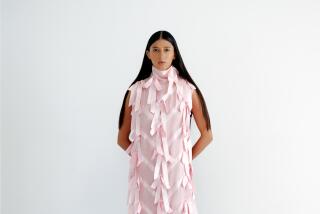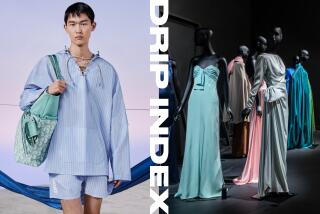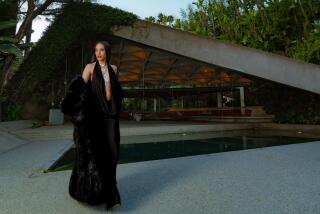Expressly Oriental
Ordinarily, fashion and politics are magnets that attract, but not one another. Yet this spring, while Chinese citizens gather in Beijing’s Tian An Men Square to express their desire for Western-style democracy, American jewelry designers are expressing appreciation for Far Eastern aesthetics.
Some would call it mere coincidence, others would say it is happening because ideas that occur at opposite points can sometimes intersect. Coincidence or not, China is currently a source of influence for Western jewelry design.
The designers themselves might explain it by recalling the first spark of inspiration they felt a year or two ago, as they watched scenes of royal opulence and lowly elegance in “The Last Emperor,” a historical epic included on many must-see movie lists. What they developed from there is not entirely unlike what the Chinese protesters in Beijing are aspiring toward now: a melding of old and new, East and West.
California designers, including David Navarro in San Francisco and Sandra Burton in Los Angeles, are picking up on the neutral-toned, earthy shapes of Chinese country life and mixing them with ancient artifacts, yet creating modern designs.
Coins, carved jade and soapstone, spiritual symbols and calligraphy are being reworked into contemporary silhouettes made of wrapped, knotted and tied leather, decorative passementerie, cords and tassels mixed with metal, stones combined with beads--all taken from the Chinese tradition.
The season’s new length for necklaces is as long as any the Emperor would wear. Some reach to the waist or beyond. Bracelets can be jumbles of ancient charms on sculptural bangles. Earrings reflect cultural images and dangle like delicate wind chimes.
“I’ve often gone to the Orient looking for adaptable pieces for my jewelry,” says Navarro, known for his ethnic designs made of museum-quality artifacts. He mentions small bells, nails and bits of cloisonne (the colorful enameled work) he has found.
“There is a beauty, a mystery, a sense of history and intrinsic value to them that exists independently of fashion,” he says.
Other jewelers, including New York’s Robert Lee Morris as well as Los Angeles’ Deanna Hamro, are opting for Asian opulence as their inspiration--part Chinese Empress, but part Chanel as well, and, of course, part modern American. Vibrantly colored, faux or real stones, including lapis blue, cinnabar red, Emperor yellow, carnelian orange or jade green mixed with bright yellow-gold are used to reinterpret ancient Chinese shapes and symbols.
“I looked back to the 14th Century to find my 24-karat gold color and the rich feeling of design,” Hamro says. “I see it as a marriage of ancient Oriental and renaissance periods. Mine is the type of ethnic jewelry the aristocracy might have worn.”
Morris was drawn to the vibrant colors of the Chinese designs he sees in his New York neighborhood.
“Living on the edge of Chinatown, I decided to do my own updated version of an ancient look,” he says.
In the world of fashion, Chinese inspiration does not exist in jewelry alone. Ready-to-wear designers are feeling the Asian influence too. Harriet Selwyn and Rosemary Peck, a Los Angeles team, are showing boxier silhouettes for spring, with Mandarin collars and frog closings.
Italian designer Romeo Gigli is reveling in the Far Eastern sensibility with his extravagant embroideries, golden-toned fabrics and sensuously wrapped shapes. Turkish-born designer Rifat Ozbek, who works in London, is looking towards the Far East to inspire his brocade-trimmed robes.
This latest modernization of a Far Eastern look occurs in the way people reassemble the classics. An ancient Chinese-inspired necklace worn with a T-shirt and jeans is a modern, young statement. For dressier times, a Chanel suit accessorized with an armload of gold-leaf, bamboo bangles or cinnabar-studded earrings hints of the Orient.
Even such unlikely items as an English Fair Isle sweater or a Giorgio Armani jacket can become chinoiserie, by mixing it with one special effect inspired by the Ancient Civilization.






